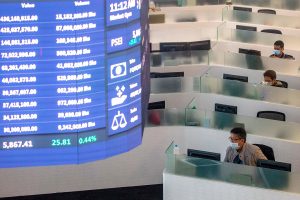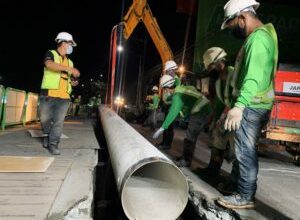Judgment Day for Pulse Asia

After every election I write in this space that the results bear out the forecasts of the two major pollsters — Social Weather Stations (SWS) and Pulse Asia (PA). In 2016, not only did I note that the results of the 2016 presidential election validated the two pollsters’ projections, I also wrote that the rankings of all the presidential and vice-presidential candidates in the two polls jibed with how they placed in the actual elections.
I defend election polling when detractors question the integrity of surveys. In 2010, presidential candidates Gilbert Teodoro and Richard Gordon asked how 2,000 respondents in a survey can represent the sentiments of an electorate made up of 50 million voters. Teodoro’s campaign manager said that Teodoro ranked No. 1 in all the universities in which the candidate spoke and that the students who said they will vote for him numbered in the tens of thousands. The late Senator Miriam Defensor Santiago raised the same issue when she ran for president in 2016. Like Teodoro, she ranked first in a survey of university students.
In reaction I wrote that it can also be asked how 10, 20, or even 30,000 university students can reflect the sentiments of 50 million voters or how students from the middle to upper income classes of the national capital region can possibly represent the entire electorate. University students belong to the middle to upper income groups, are 18-22 years old, mostly single, highly educated, well-informed by mass media, and highly politicized. Their choice of candidate differs from the voting preference of the electorate taken as a whole.
This trust in election polling stems from my having worked for Robot Statistics, the first public opinion pollster/market research firm in the country. In fact, it was my first job right after college. It was the Philippine affiliate of Gallup Polls when I was with the firm. I had also earned enough credits in Statistics — as an AB-Commerce student, then as a graduate student of Psychology, and subsequently as an MBA student — to have a good understanding of random sampling, margin of error, and confidence level. (Robot enrolled me in Ateneo’s Graduate School of Psychology as it was then planning to go into motivation research.)
But when the results of the survey conducted by Pulse Asia from Jan. 19 to 24 showed Bongbong Marcos as the preferred presidential candidate of 60% of the respondents and Leni the choice of only 16%, doubts lurked in my mind. In the three elections where Bongbong ran for national office, he got no more than 35% of the votes of the electorate.
When Bongbong first ran for senator in 1995, he got 8,168,788 votes, or 31.7% of the votes cast that year, short of the number of votes needed to land one of the 12 Senate seats to be filled up. He ran again in 2010. He garnered 13,169,634 votes or 34.5%, good enough to win him a Senate seat. When he ran for vice-president in 2016, he got 14,155,314 or 34.5%. But Leni Robredo bested him with her 14,418,817 votes or 35.1%.
Bongbong had not done anything from the elections of 2016 to 2021 to have raised his political stock or gained the admiration, gratitude, or goodwill of the electorate. I asked how he could be preferred by 60% of the respondents when he is running for president against the same person who beat him for the vice-presidency, who is now preferred by only 16%?
Leni as vice-president had not done a bad job for people who voted her vice-president to diminish in number by half. In fact, she did a lot for the people, especially the marginalized, in spite of the fact that President Rodrigo Duterte hindered her efforts to serve the people. In contrast, Bongbong was preoccupied with his electoral protest during the same period.
Some political pundits say Bongbong’s message of “Babangon muli” (“Rise again”) instills nostalgia of the “Golden Age” during his father’s presidency. Bongbong’s army of trolls had flooded social media with narratives of a robust economy, grandiose infrastructure, and lasting peace and order that his father’s reign was. As the youth did not experience life under Martial Law, they believe what they read in social media.
But netizens saturated social media with factual evidence that belie the claim that Ferdinand Marcos’ 20-year rule was the “Golden Age” of Philippine history. Their posts show that his reign was marked by massive corruption, unbridled human rights abuses, and an economy ever on the verge of collapse.
Also, the Catholic Bishops Conference of the Philippines (CBCP) issued a pastoral letter on Feb. 25 that spoke of “blatant and subtle distortion” of history, the trivialization of the People Power Revolution, and the seeding of false information to influence the opinion of the people and to malign and blackmail people. The pastoral letter called attention to “troll farms which sow the virus of lies.”
Detractors of Bongbong have said that even if the narrative of a “Golden Age” were true, it does not necessarily follow that the son can duplicate what his father had achieved. He doesn’t have the brilliant mind, the zeal for work, and the doggedness to finish what he had set out to accomplish — qualities that his father had. He has shown during the campaign that he lacks the oratorical skills or the persuasive power to be able to lead people.
He has been branded a coward for not participating in the Comelec-sponsored debates and for refusing to be interviewed by respected local broadcast journalists and foreign correspondents.
All that bashing seems to have had little effect on his rating in Pulse Asia surveys. In the March 17 to 21 survey, Bongbong’s score was 56%, down by 4% from his 60% in January. That is still 21% higher than the 35% he got in actual elections. The April 16 to 21 survey didn’t reflect any change in the attitudes of people towards him. Fifty-six percent still preferred him over the other candidates.
This almost constant high rating of Bongbong in Pulse Asia’s surveys has been met with skepticism if not criticism, not from politicians who fare badly in election polls, but from respected professional statisticians. Dr. Romulo Virola, former secretary-general of the National Statistical Coordination Board and a professor of Statistics in UP, Diliman, found numerous “flaws” in Pulse Asia’s current election surveys. He pointed out overrepresentation and underrepresentation of certain demographic groups. Such over and under representation of sub-groups could have corrupted the survey results.
Arvin Boller, lecturer at the Ateneo School of Social Science, says not one presidentiable since 1986 has won the votes of the majority of Filipinos. The Pulse Asia surveys show Bongbong could potentially pull it off. He sees three possible reasons for the 56% rating: 1. Bongbong’s campaign is extremely effective; 2. there is a methodical flaw in the conduct of the survey; 3. there is a conspiracy behind the survey results.
Well, we will know today the results of yesterday’s elections. If the Pulse Asia numbers for Bongbong Marcos and Leni Robredo match or approximate closely the results of the elections, then Pulse Asia will be affirmed as a credible forecaster of election outcomes. If the results show a Leni Robredo victory, Pulse Asia will crumble, bringing down with it the entire polling industry.
Oscar P. Lagman, Jr. is a retired corporate executive, business consultant, and management professor. He has been a politicized citizen since his college days in the late 1950s.




